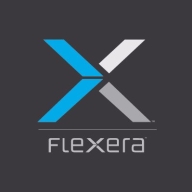

Flexera Cloud Management Platform and AWS Trusted Advisor compete in the cloud management space. AWS Trusted Advisor has an edge due to its robust feature set, though CMP excels in pricing and customer support.
Features: Flexera CMP offers multi-cloud cost optimization, resource management, and governance capabilities. AWS Trusted Advisor provides resource checks, cost recommendations, and security best practices. While Flexera has strong cross-cloud capabilities, AWS Trusted Advisor's integration within AWS services adds significant value for its users.
Ease of Deployment and Customer Service: Flexera CMP supports diverse cloud environments with a flexible deployment model and strong customer service for seamless implementation. AWS Trusted Advisor, integrated within AWS, offers direct integration but lacks flexibility outside the AWS ecosystem.
Pricing and ROI: Flexera CMP provides competitive pricing with a focus on maximizing ROI by reducing cloud expenditures across multiple platforms. AWS Trusted Advisor has lower upfront costs tied to AWS usage, but benefits are mainly for those fully vested in the AWS ecosystem.
| Product | Market Share (%) |
|---|---|
| AWS Trusted Advisor | 1.0% |
| Flexera Cloud Management Platform (CMP) | 2.1% |
| Other | 96.9% |

| Company Size | Count |
|---|---|
| Small Business | 5 |
| Large Enterprise | 3 |
AWS Trusted Advisor is your customized cloud expert! It helps you to observe best practices for the use of AWS by inspecting your AWS environment with an eye toward saving money, improving system performance and reliability, and closing security gaps.
Flexera Cloud Management Platform (CMP) offers comprehensive capabilities for managing cloud environments, enabling businesses to control costs, optimize resources, and ensure compliance across multiple cloud providers.
Flexera CMP is designed to streamline cloud management by providing a unified platform that supports automation, reporting, and policy enforcement. It empowers IT departments to efficiently manage multi-cloud environments by offering tools for workload optimization, visibility into cloud usage patterns, and governance features. Flexera CMP's integrations and customizable workflows enable seamless deployment and management of applications, reducing the complexity often associated with cloud operations.
What are the key features of Flexera CMP?Flexera CMP is particularly valuable for industries with complex IT environments such as finance, healthcare, and technology, where effective cloud management is critical to maintaining continuous operations. By leveraging Flexera CMP, these industries can optimize their cloud strategies, balance workloads efficiently, and ensure data security and compliance, thereby driving business transformation.
We monitor all Cloud Management reviews to prevent fraudulent reviews and keep review quality high. We do not post reviews by company employees or direct competitors. We validate each review for authenticity via cross-reference with LinkedIn, and personal follow-up with the reviewer when necessary.